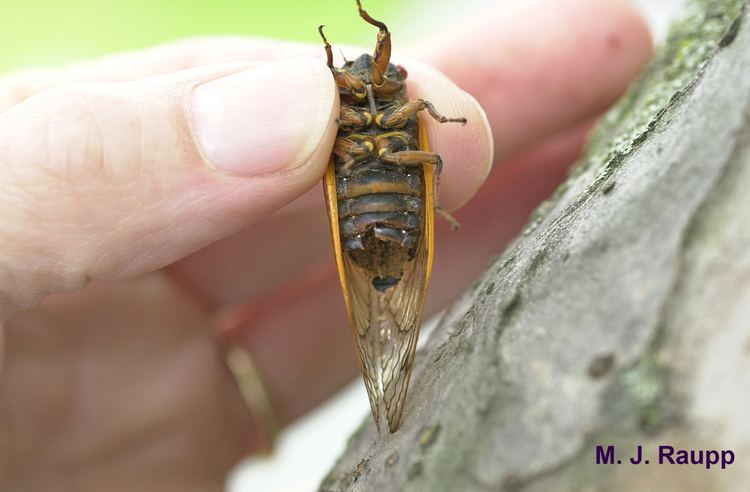Kingdom Fungi Genus Massospora Higher classification Massospora | Division Zygomycota Family Entomophthoraceae Scientific name Massospora cicadina Rank Species | |
 | ||
Similar Magicicada septendecim, Cicadomorpha, Typhlocybinae, Magicicada cassini, Issidae | ||
Cicada with massospora cicadina struggles to move
Massospora cicadina is a fungal pathogen; which infects imago of periodical cicadas; resulting in infertility and death.
Contents
Life cycle
Spores of M. cicadina are capable of germinating and infecting cicadas at as little as one year; but may remain dormant for either 13 or 17 years before becoming active. Cicadas first become infected by fungal spores as the nymphs prepare to leave the soil and become adults. Early stages of the infection are completely concealed inside the abdomen of the cicada. At or near the death of the host, the rear segments of the abdomen fall off, revealing a white, chalky mass of the fungus, which actively produces and forcibly discharges spores. These spores are infective to other periodical cicadas, and create a secondary cycle of disease. At the end of this secondary cycle, the fungus produces a different kind of spores, which have thick, ornamented walls and are not directly infective to adult cicadas; these spores lie dormant in soil. The fungus renders both males and females sterile, though they may remain alive and mobile while discharging spores. Affected males are not able to mate, while affected females can mate but cannot oviposit.
Ecology
M. cicadina is considered a parasite. The fungi grows inside the abdomen of the host, before releasing its spores. The fungi can infect both male and female adult cicadas. Resting spores can remain in the soil for less than a year or as much as seventeen years between infecting populations.
Habitat
Species of the Massospora genus are believed to be found in all habitats of their host species; which includes large temperate ranges in the Southern and Northern hemisphere.
